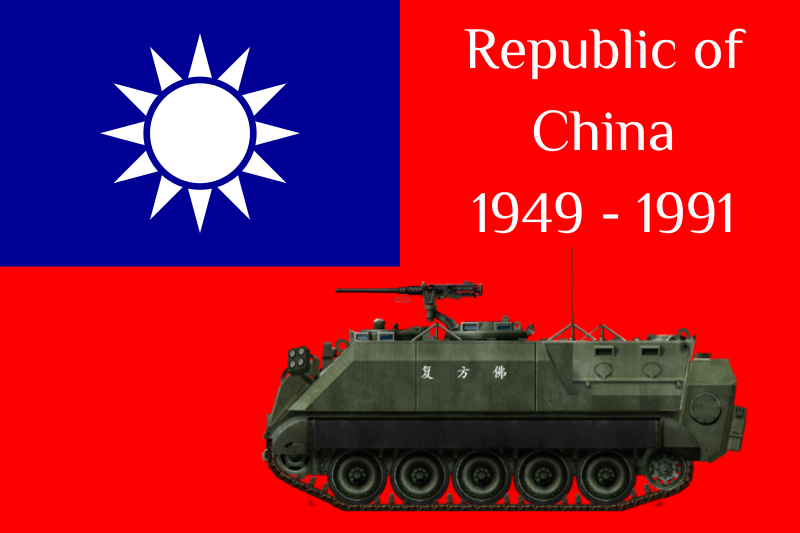Prototypes
Following the 1949 defeat of Nationalist Forces in the Chinese Civil War, the Republic of China’s (ROC) government was forced to exile itself to Taiwan. In addition, there were remnants in Burma, the large island of Hainan, which was lost in spring 1950, and archipelagoes, such as the Kinmen Island, which the ROC holds to this day.
For essentially all of the Cold War, until 1987, Taiwan was a dictatorship, subjected to martial law, and run solely by the Kuomintang (Nationalist Party), first under Generalissimo Chiang Kai-shek (who had led the KMT from 1925 to his death in 1975), and later his son, Chiang Ching-kuo. A process of liberalization and democratization would begin in the late 1980s, with martial law being lifted in 1987.
In the middle-to-late Cold War, Taiwan was also quite successful in developing its economy and industry, particularly the IT sector. The country became one of the “Four Asian Tigers”, quickly growing East Asian economies, alongside South Korea, Hong Kong, and Singapore.
Militarily, Taiwan’s position was somewhat precarious for much of the Cold War. The country did receive a significant amount of armored fighting vehicles from the USA, particularly in the 1950s, but was always vulnerable to the whims of US foreign policy. Most notoriously after the Chinese seat at the UN was handed over to the People’s Republic of China as a result of United Nations General Assembly Resolution 2758 in 1971, leading to Taiwan becoming an unrecognized, non-UN state.
In terms of armored fighting vehicles, this manifested in Taiwan struggling to acquire a good number of American M48 tanks in the 1960s and 1970s. At this time, the US was pursuing a normalization of relations with the PRC. Said People’s Liberation Army had been able to field a good number of Type 59 tanks that significantly outclassed much of the Republic of China’s Army gear, which often was late WW2 American equipment. Taiwan launched a number of initiatives to try and be less dependent on foreign supplies, or to improve old armor to allow it to remain relevant, for example, through vehicles and programs such as the Type 64, Type 65, and Wan Cheng program in the 1960s and 1970s.
Nonetheless, the Republic of China’s Army (ROCA) would only truly be able to vastly modernize its armed forces towards the late 1980s, with the delivery of 300 M60A3 TTSs from the US, as well as support that would enable Taiwan to field the CM-11 and CM-12 tanks. Earlier in the 1980s, Taiwan was able to start mass production of the CM-21, an armored personnel carrier based on the M113, which would allow for the mechanization of much of the ROCA, while being the base for a number of variants. Though some of these vehicles have older origins, their mass production and fielding in the 1980s onward can be seen as the true birth of a sizable armored fighting vehicles industry in Taiwan, which remains active to this day.

